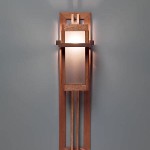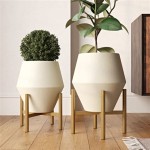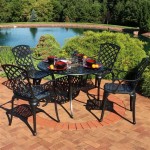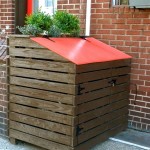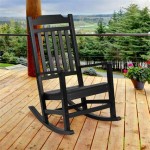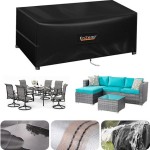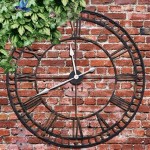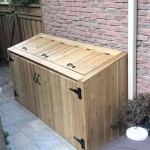Best Material For Outdoor Table Top
Selecting the appropriate material for an outdoor table top requires careful consideration of numerous factors, including durability, weather resistance, maintenance requirements, aesthetic appeal, and budget. The specific needs of the user, the expected environmental conditions, and the intended use of the table will all influence the optimal choice. This article provides a comprehensive overview of various materials commonly used for outdoor table tops, outlining their respective advantages and disadvantages to facilitate informed decision-making.
Understanding Environmental Factors
Before delving into specific materials, it’s crucial to understand the typical environmental stressors that outdoor furniture must withstand. Exposure to sunlight, particularly ultraviolet (UV) radiation, can cause fading, discoloration, and degradation of many materials over time. Fluctuations in temperature can lead to expansion and contraction, potentially causing cracking or warping. Moisture, whether in the form of rain, humidity, or snow, can promote corrosion, mold growth, and water damage. Wind can inflict physical damage, especially if the table is lightweight or unsecured. Considering these factors is paramount to ensuring the longevity and performance of the outdoor table top.
Geographic location plays a significant role in determining the severity of these environmental factors. Locations with intense sun exposure will require materials with high UV resistance. Areas with frequent rainfall will necessitate water-resistant or waterproof options. Environments with extreme temperature variations demand materials with minimal expansion and contraction properties. Coastal regions, with their salty air, pose a particular challenge, requiring materials resistant to corrosion and salt damage.
Furthermore, the intended use of the table should be considered. A table used primarily for dining will need a surface that is easy to clean and resistant to stains. A table used for displaying plants will need to withstand moisture and potential spills. A heavily used table will require a more durable and scratch-resistant surface.
Common Materials and Their Properties
Several materials are commonly used for outdoor table tops, each offering a unique combination of properties and aesthetic qualities. Some of the most popular options include wood, metal, stone, plastic, and composite materials. The suitability of each material depends on the specific application and environmental conditions.
Wood: Wood offers a natural, warm aesthetic and can be easily customized. However, it requires regular maintenance to prevent deterioration. The choice of wood species is critical, as some woods are more resistant to weathering and decay than others. Teak, cedar, and redwood are popular choices for outdoor furniture due to their natural oils, which provide inherent resistance to insects and moisture. However, even these durable woods require periodic sealing or staining to maintain their appearance and prevent cracking or warping. Softwoods like pine are less expensive but require more frequent treatment and are more susceptible to damage.
Metal: Metal table tops are known for their durability and weather resistance. Aluminum is a popular choice due to its lightweight nature and resistance to rust. It is often powder-coated to provide additional protection against corrosion and to offer a wider range of colors. Steel is stronger than aluminum but is susceptible to rust if not properly treated. Stainless steel offers superior rust resistance but is more expensive. Wrought iron is a classic choice for outdoor furniture, offering a traditional aesthetic and considerable weight. However, it requires regular painting or powder-coating to prevent rust. Metal table tops can become hot in direct sunlight, which may be a consideration depending on the climate.
Stone: Stone table tops, such as granite, marble, and slate, offer a sophisticated and durable option. Granite is particularly well-suited for outdoor use due to its hardness, resistance to staining, and weather resistance. Marble is more porous than granite and requires sealing to prevent staining. Slate is a durable and attractive option but can be susceptible to chipping or cracking under extreme temperature fluctuations. Stone table tops are heavy, which can be an advantage in windy conditions, but also makes them difficult to move. They can also be cold to the touch, which may be a consideration in colder climates.
Plastic: Plastic table tops, such as those made from high-density polyethylene (HDPE) or polypropylene, are lightweight, affordable, and weather-resistant. They are available in a wide range of colors and styles and require minimal maintenance. However, plastic can be prone to fading and cracking under prolonged exposure to UV radiation. Recycled plastic lumber is an increasingly popular option, offering a more sustainable and durable alternative to traditional plastic. It resembles wood in appearance but does not require painting or sealing. The durability of recycled plastic lumber varies depending on the quality of the recycled materials used.
Composite Materials: Composite materials, such as concrete and resin mixtures, offer a combination of durability, weather resistance, and aesthetic appeal. These materials can be molded into various shapes and finishes, offering a high degree of design flexibility. Concrete table tops are heavy and durable but can be prone to cracking if not properly sealed. Resin table tops are lighter than concrete and offer excellent weather resistance. The specific properties of composite materials vary depending on the composition and manufacturing process.
Key Considerations for Material Selection
The selection of the optimal material for an outdoor table top depends on a careful evaluation of several key considerations. These include durability and weather resistance, maintenance requirements, aesthetic preferences, budget constraints, and environmental impact.
Durability and Weather Resistance: The chosen material must be able to withstand the rigors of outdoor exposure, including sunlight, temperature fluctuations, moisture, and wind. Materials with high UV resistance, water resistance, and resistance to corrosion are essential for ensuring longevity. The structural integrity of the table top should also be considered, as it must be able to support the intended weight and withstand potential impacts.
Maintenance Requirements: Different materials require varying levels of maintenance to maintain their appearance and performance. Wood requires regular sealing or staining to prevent deterioration. Metal may require periodic painting or powder-coating to prevent rust. Stone may require sealing to prevent staining. Plastic and composite materials generally require minimal maintenance, but may need to be cleaned periodically to remove dirt and debris. The amount of time and effort required for maintenance should be considered when making a selection.
Aesthetic Preferences: The aesthetic appeal of the table top is an important consideration, as it should complement the overall design of the outdoor space. Wood offers a natural, warm aesthetic, while metal offers a more modern and industrial look. Stone offers a sophisticated and elegant appearance, while plastic and composite materials offer a wide range of colors and styles. The texture, color, and finish of the table top should be carefully considered to ensure that it aligns with the desired aesthetic.
Budget Constraints: The cost of different materials can vary significantly. Wood and metal are generally more affordable than stone or composite materials. However, the long-term cost of ownership should also be considered, as materials that require more frequent maintenance may be more expensive in the long run. A balance between initial cost and long-term durability should be struck.
Environmental Impact: The environmental impact of the chosen material should also be considered. Recycled materials and sustainably sourced wood are more environmentally friendly options. The manufacturing process and the disposal of the material at the end of its life cycle should also be taken into account. Choosing materials that are durable and long-lasting can also reduce the overall environmental impact by minimizing the need for replacement.
In summary, selecting the best material for an outdoor table top is a multifaceted decision that requires careful evaluation of several factors. By considering the environmental conditions, intended use, material properties, and key considerations outlined in this article, a well-informed decision can be made, ensuring the longevity, performance, and aesthetic appeal of the outdoor table.

How To Choose The Best Phenolic Hpl Outdoor Table Top
:max_bytes(150000):strip_icc()/remodelaholic-b957b7f134eb4281be2bcb3dee084626.jpg?strip=all)
18 Diy Outdoor Table Plans
:max_bytes(150000):strip_icc()/cherishedbliss2-8adb217c02af4ac18eae243847d59b2e.jpg?strip=all)
18 Diy Outdoor Table Plans
:max_bytes(150000):strip_icc()/cherishedbliss-2fe16e06a68b44589c6631e6b39ae68f.jpg?strip=all)
18 Diy Outdoor Table Plans

The Best Patio Dining Sets Reviews By Wirecutter

Top 6 Best Fabric For Outdoor Patio Furniture Guide E Architect
:max_bytes(150000):strip_icc()/charlestoncrafted-b52d47713ae44d57a8f06697b427b9fe.jpg?strip=all)
18 Diy Outdoor Table Plans

The Best Patio Dining Sets Reviews By Wirecutter

How To Protect Outdoor Epoxy Table Video Tutorial

The Best Patio Dining Sets Reviews By Wirecutter

